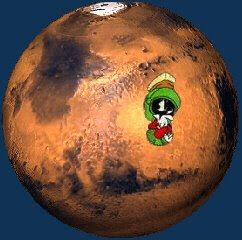I avoid merely “re-reporting” space news in the journalism cauldron, because if you want scientific details, you're better off reading the official NASA article. (If you’re really hardcore, see Michael Mumma’s original Science Magazine submission.)

I prefer to discuss reactions, and I found the most thought-provoking response from a Popular Mechanics columnist who fretted in print: WHY I HOPE THERE'S NO LIFE ON MARS.
Glenn Reynolds elaborates, “I hope Mars is dead as a doornail. Even deader, since doornails harbor bacterial life. Dead as the moon, then. Why am I such a spoilsport? Because [If] there’s no life on Mars, that means we can go there... with no worries about bringing back deadly germs. (We initially quarantined Apollo astronauts upon their return to Earth. But by Apollo 15 NASA concluded that the moon was as lifeless as, well, the moon.) No concerns about bacteria, and none about contaminating the moon with earthly bacteria that might mess up its biospheric ecology.”
He goes on to say the 1967 Outer Space Treaty may complicate further exploration, as it outlines that preventing cross-contamination is the LAW (as signed by 62 nations). There’s a reason we sterilize crafts prior to launch, and why care was taken to protectively seal rock samples. Is he the lone voice of reason, or getting way ahead of himself?
Methane on Mars was actually detected in 1999, 2001 and 2003, but little was known about origins or amounts. Now, areas of active release have been detected, alongside definitive proof that CH4 is continually replenished. Through geochemical or microbial means? If it’s microbes, they need sub-surface water to pull this off!
So, rocks or bugs? For as much hope and emotion as we all invest in “finding life elsewhere,” Reynolds raises the skillfully-constructed points that there are biological, ethical and legal ramifications, all of which may make every space agency’s jobs more challenging… but I don’t think for one moment this would slow us down from wanting or trying to land on the red planet.


































































